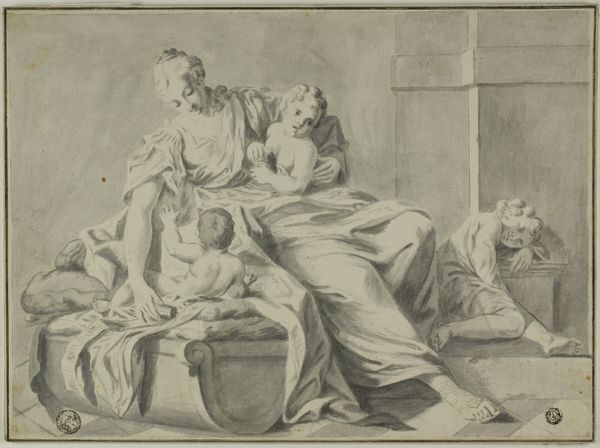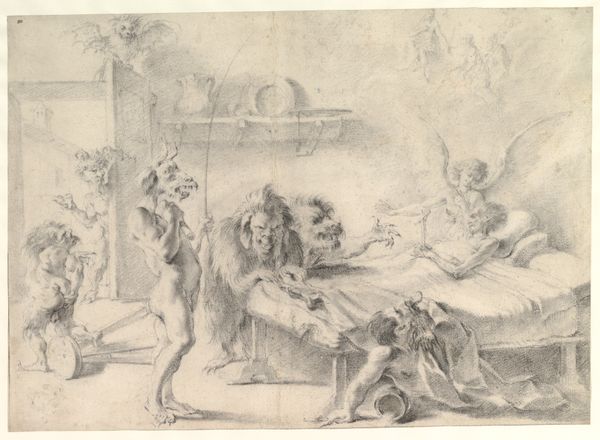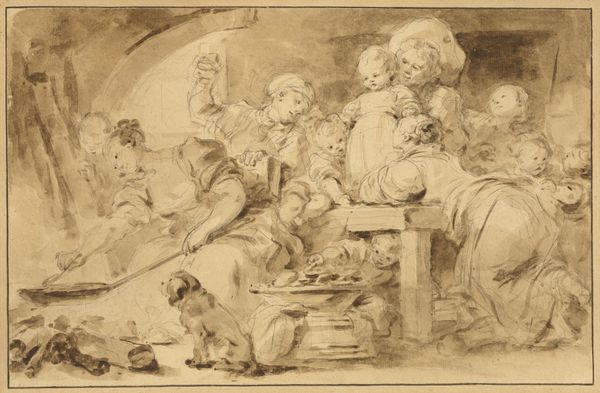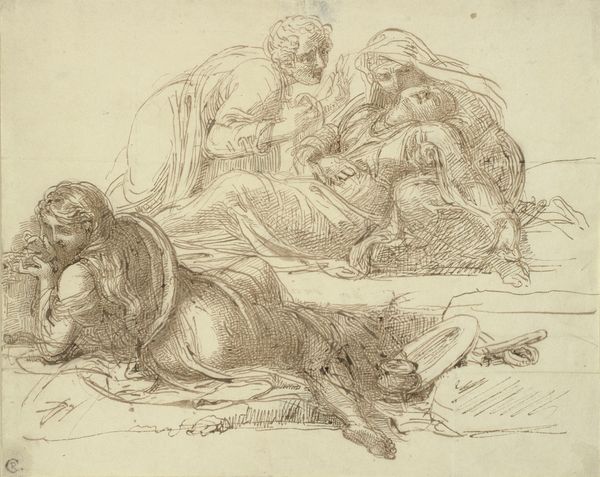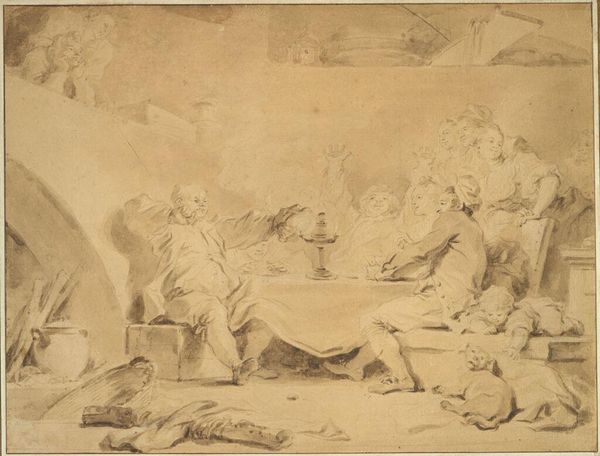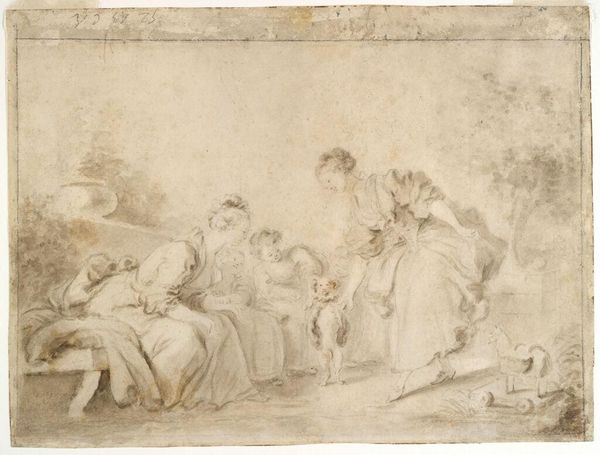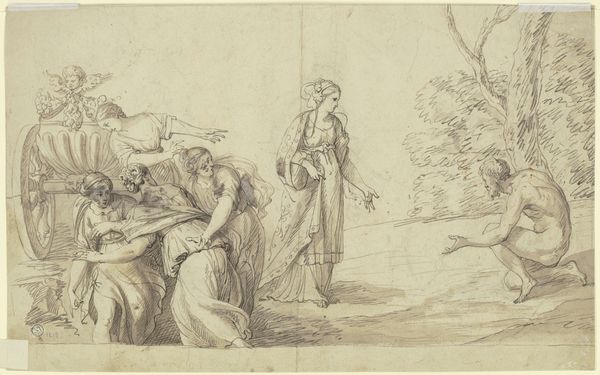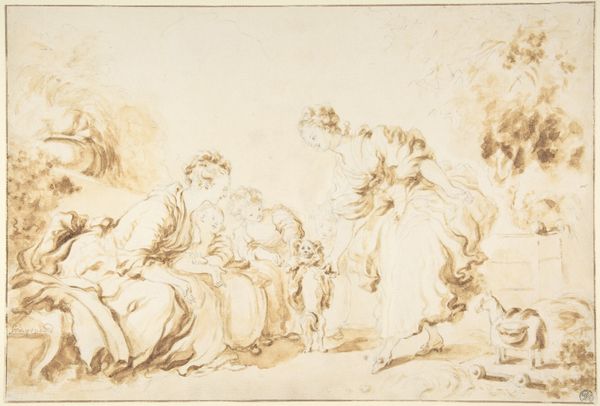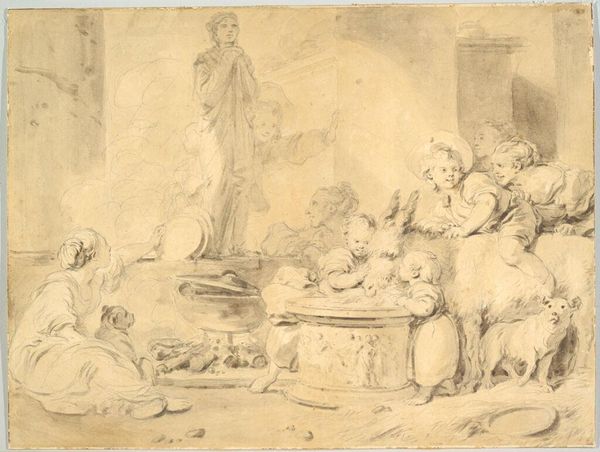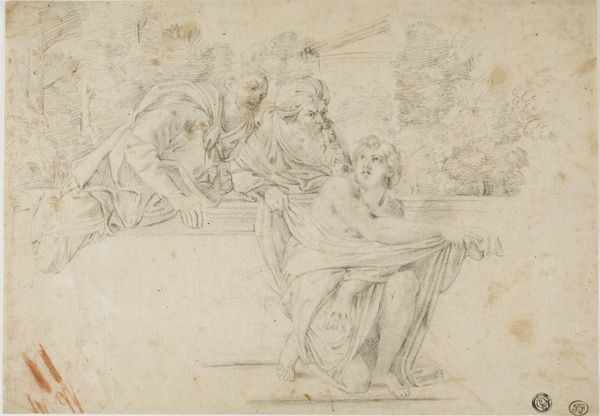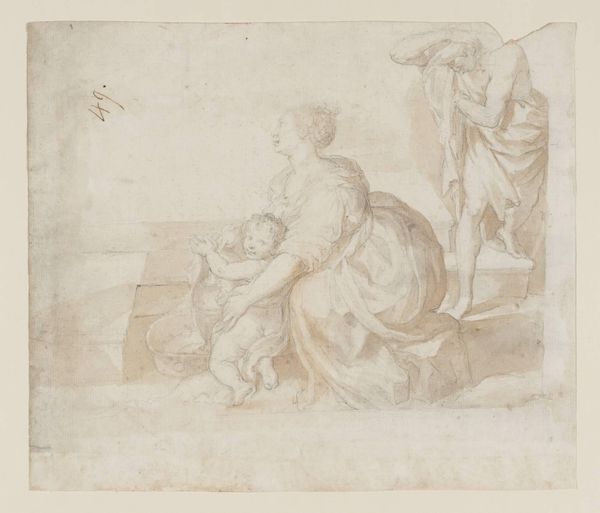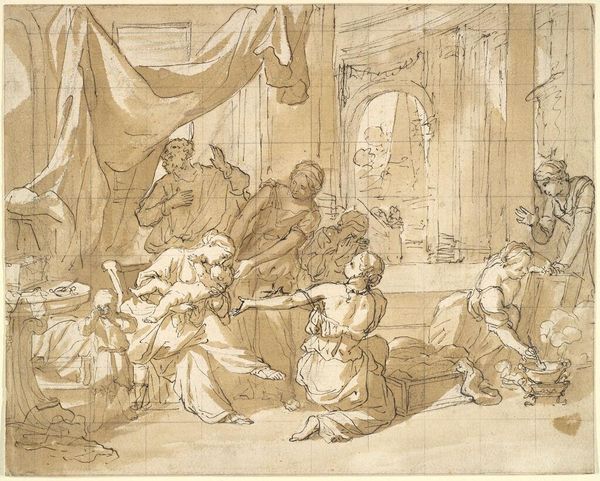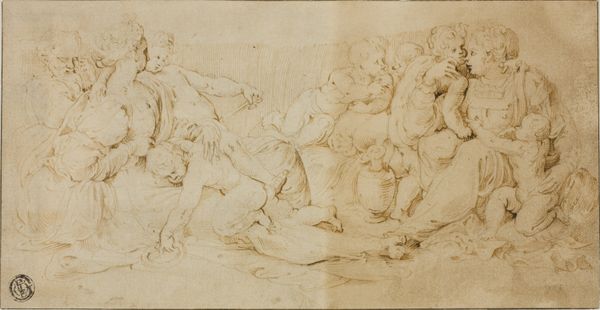
Copyright: Public Domain: Artvee
Curator: The delicacy is striking! The sepia tones of this charcoal drawing, attributed to Jean-Honoré Fragonard, immediately evoke a sense of intimacy, a Rococo indulgence in the domestic sphere. It’s titled “The Little Preacher,” and dates from the late 1770s. Editor: Sepia it is, indeed! And that medium offers a softness that tempers the energy of the composition. It feels provisional, like a snapshot before color is applied. All that discarded stuff scattered on the ground—paper, plate, little coins— suggests a real material relationship, right? A domestic performance staged with what’s at hand? Curator: Absolutely! And the ‘performance’ is key to understanding Fragonard’s intent. The child orator figure atop the box serves as an emblem of emerging authority and moral persuasion—youth stepping into a role usually reserved for the patriarch. It's also playful. We feel a release in how gendered or religious norms were perceived in 18th century bourgeois life. Editor: Right, “emerging.” This piece presents a glimpse into that liminal moment where the sacred begins its transition into secular and commercial activity. Note the positioning of the older women on the left side; they represent a kind of captive audience. Does their role imply they have to sit quietly? Is religion merely a performance— a kind of material entertainment? Curator: Intriguing thoughts! I view the adults around the child not as a coerced group, but as active witnesses engaged in observing a theatrical and potentially didactic moment. To me, the "sermon" is secondary to the expressions the little speech elicits from them, joy, bewilderment, affection… These are universal gestures, suggesting an inner communion achieved through visual, not strictly rhetorical, means. Editor: Perhaps! Yet the visible paper roll brings a crucial material connection back down to earth. Think of all the preparation the 'sermon' required, like rehearsing with props! "The Little Preacher," for me, is a reminder that grand narratives emerge from everyday experiences: that belief comes from stuff! Curator: I now understand that your material reading of “belief from stuff” enriches my symbolic one, to observe social interactions around what we choose to consider as truth is essential for comprehending this artwork. Editor: Right back at you. Seeing your understanding of symbolic performance has shed light on the role of images like Fragonard's during a transformative period of belief.
Comments
No comments
Be the first to comment and join the conversation on the ultimate creative platform.
